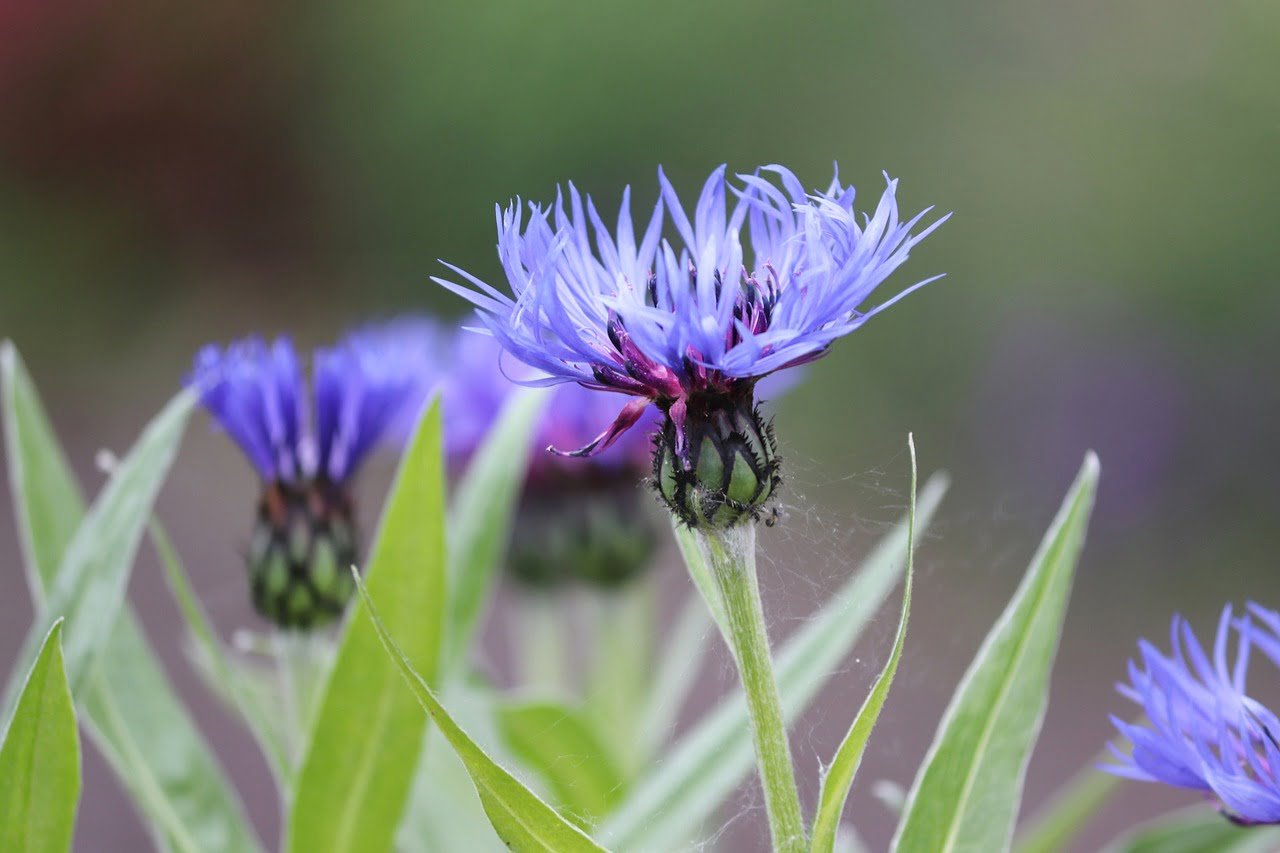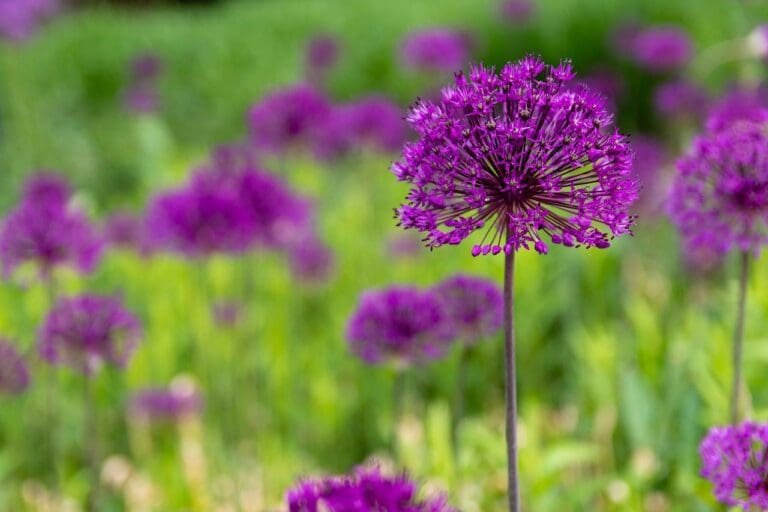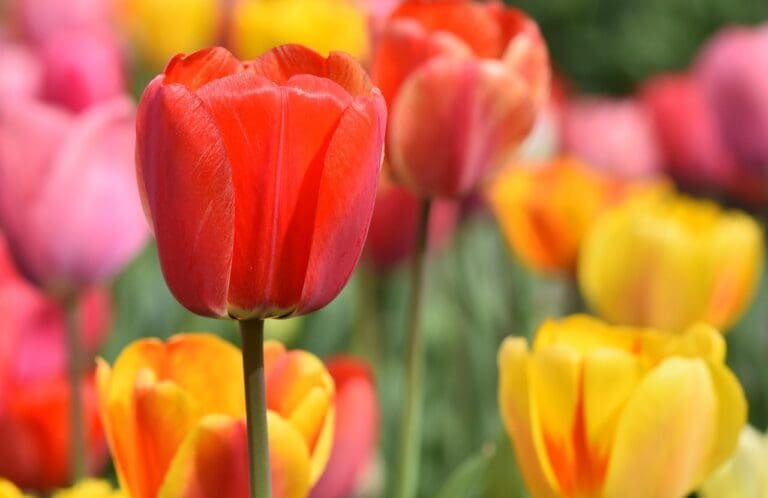Cornflowers, with their vibrant blue blossoms and ease of care, are a delightful addition to any garden. Sometimes called bachelor’s buttons, cornflowers have an old-fashioned charm combined with a contemporary adaptability that makes them appealing to all types of gardeners. Read on to learn everything you need to know to successfully grow these classic cottage garden flowers.
Cornflowers are one of the most recognizable flowers, gracing natural meadows and formal flower beds alike with their bright blue hue. Their wispy petals and hardy nature make cornflowers, or Centaurea cyanus, a favourite for beginning and master gardeners. If you want to learn how to grow cornflowers from seed to harvest, you’ll find all the tips and techniques in this complete growing guide.
You might also be interested in: Annuals for Wild Gardens
Choosing the Right Cornflower Species
While most people associate cornflowers with their striking sapphire blue colour, they actually come in shades of pink, purple, white and even yellow. Some of the most popular types include:
- Cornflower (Centaurea cyanus): The archetypal cornflower sports fuzzy grey-green leaves and intense blue frilly petals. These are hardy annuals that self-seed readily.
- Mountain Bluet (Centaurea montana): Bears lavender-blue flowers on 12-18 inch stems above mounds of dark green foliage. It’s a hardy perennial.
- Sweet Sultan (Centaurea moschata): A fragrant heirloom variety that blooms in shades of pink, cream or yellow in early summer.
- Basket Flower (Centaurea macrocephala): Stunning yellow pom-poms mature to thistle-like burnt orange seed heads. Its bronze ferny leaves provide visual interest even when not in bloom.
Take your gardening zone, colour preferences and growth habits into account when deciding which species make the most sense for your needs. Those focused on cutting gardens often opt for Sweet Sultans or annual Bachelor’s Buttons while Mountain Bluets shine in perennial beds and borders. No matter which you choose, how to grow cornflowers comes down to a few simple tips.
Sowing Cornflower Seeds
When to Plant
- Outdoor sowing: After the danger of frost passes in spring when soil temperatures have warmed a little.
- Indoor sowing: 6-8 weeks before the last frost date
How to Plant
- Fill clean pots or seed trays with moistened seed starting mix. Level and gently firm.
- Sprinkle 5-6 seeds onto the surface, spacing them 1-2” apart.
- Lightly cover with a thin layer of vermiculite or extra potting mix. Pat gently.
- Mist until completely moistened. Slip inside a plastic dome or mini greenhouse if available.
- Place container in bright, indirect light at 65-75°F.
- Sprouts will emerge in 7-14 days. Remove dome once the first true leaves appear.
- Thin to 1-2 seedlings per cell once they reach 3” tall.
- Harden off for 7-10 days before transplanting outdoors after the danger of frost passes. Space plants 8-12” apart in full sun after all risk of frost.
Whether you start them indoors or outdoors, pay close attention to proper sowing depth, moisture levels and thinning to grow sturdy transplants ready for the garden. Remember, cornflower seeds need light to germinate. Resist burying them too deeply.
Caring for Cornflower Plants
Give your cornflowers care tailored to their growth habits once settled into the garden. Here’s what they need to put on a prolific floral display:
Sun and Temperature
- Full sun is best, requiring at least six hours of direct sunlight per day
- Cool spring and fall temperatures suit them. Hot temps can inhibit flowering.
- Overwinter as an annual in zones 3-8. Grow as a short-lived perennial in zones 8-9.
Water
- Drought tolerant once established
- Requires 1” of rainfall per week
- Avoid waterlogged conditions
Fertilizer
- Apply balanced organic fertilizer once buds appear
- Work 1” of compost into beds before planting
- Avoid high-nitrogen synthetic chemicals
Pests and Diseases
- Generally pest and disease resistant
- Monitor for powdery mildew, stem rot, leaf miners and slugs
- Attract beneficial insects like ladybugs for natural control
- Practice smart garden sanitation methods
A little TLC goes a long way when learning how to grow cornflowers. Meet their preferences for soil, sun and moisture levels and they reward you with vibrant, carefree colour.
Their long vase life makes cornflower bunches an excellent value cut flower. You’ll get over two weeks of enjoyment out of each harvest when properly conditioned and displayed.
Frequently Asked Questions About Growing Cornflowers
If this is your first time attempting these classic cottage garden flowers, chances are you still have a few questions lingering. Here are answers to some of the most common cornflower growing queries:
Q. When is the best time to plant cornflowers?
The ideal window is early spring once temperatures average 60 degrees F or above. This gives cornflowers time to establish before heat arrives.
Q. How long do cornflowers bloom?
Each stem blooms for 1-2 weeks. However, the blooming period lasts 4-6 weeks per plant in peak season. Extend flowering by promptly deadheading spent blooms.
Q. Do cornflowers need deadheading?
While not strictly necessary, regularly removing faded flowers redirects energy back to flower production. Prevent rampant self-seeding by deadheading cornflowers before seed heads mature.
Q. Can you grow cornflowers in containers?
Absolutely! Dwarf varieties thrive in patio pots at least 10” deep. Provide adequate drainage, quality potting mix, sun exposure and consistent watering.
Q. What flowers pair well with cornflowers?
Try combining their electric blue tone with sunset shades like marigolds, zinnias, rudbeckia and cosmos. They also mingle beautifully with poppies, daisies and snapdragons.
Conclusion
Cornflowers bring easy elegance and versatility perfect for gardens of all styles. Now that you know how to grow cornflowers successfully, you’re ready to add their vibrant colour to your own outdoor space. A bit of advance planning and attentive care allows anyone to cultivate these captivating flowers. Trust us, their lush blossoms will quickly become your new favourite addition!



